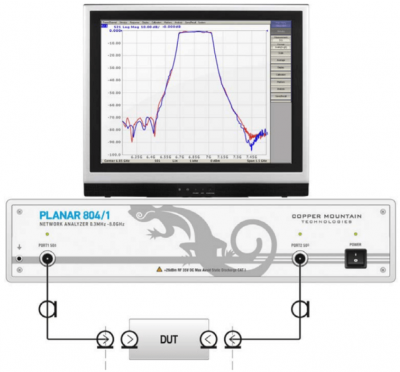
Conducting Calibration with the SOLR (Unknown Thru) Method
April 19, 2018Introduction
This article describes advantages of vector network analyzer (VNA) calibration by Unknown Thru (SOLR) method, compared to traditional SOLT calibration for measurement of 2-port noninsertable devices. Errors, which surface during SOLT calibration, are demonstrated. Recommendations are given for assessing the quality of the conducted SOLR calibration.
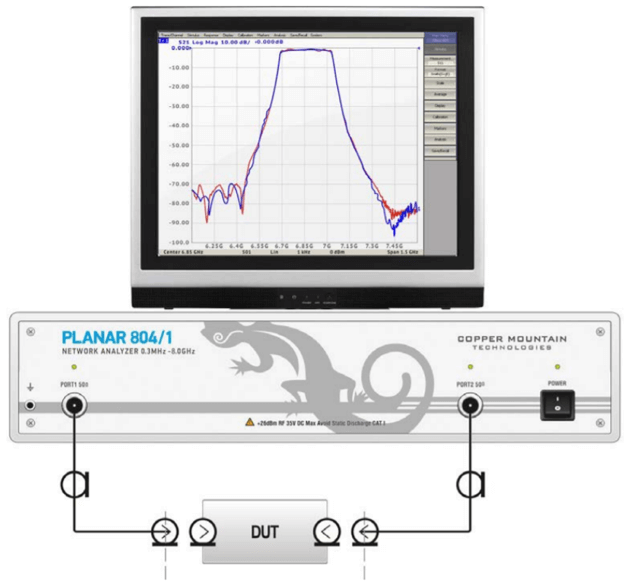
Figure 1: DUT with coaxial connectors of the same gender and type.
For measurement of microwave devices with a VNA, the most important element is the correctly performed calibration of the entire measurement system, which includes the VNA, as well as connecting cables and possibly other connecting networks, ending with ports that will be connected to the device under test (DUT). For measurement of 2-port DUTs, the most widely used is the SOLT calibration, which requires measurements of four calibration measures: Short, Open, Load, Thru. During a “classic” SOLT calibration direct connection of the measurement ports is used – so-called Zero-length Thru. In case when the DUT is equipped with connectors of the same type (Fig. 1), SOLT calibration requires an adapter (not zero-length thru). Same situation arises during measurement of a DUT with different connector types, for example one port – SMA, the other – type-N. Knowledge of Thru parameters is required to guarantee a precise SOLT calibration. These parameters, as a rule, are given by the calibration measure model, which in practice is problematic. To solve it, PLANAR 804/1 VNA offers calibration by Unknown Thru method. Unknown Thru does not require knowledge of its parameters, does not present strict requirements to its quality, except the requirement for reciprocity, which is easily accomplished. Method of Unknown Thru is called SOLR: Short, Open, Load, Reciprocal.
Often in practice the SOLT calibration uses high quality Thru, but neglect its model. This leads to two types of error. First – additional delay and attenuation of the Thru, which can be added to the DUT characteristic “with a minus sign”. Second – incorrect determination of load port match. First error can be compensated for during measurement (on condition that a high quality Thru is used) by the “port extension” function of the VNA. Second error cannot be compensated for and produces characteristic parasitic ripples on the DUT measurement. Example of such error during measurement of a bandpass filter is shown in Fig. 2. Compared to SOLT calibration, SOLR is free from such deficiency.
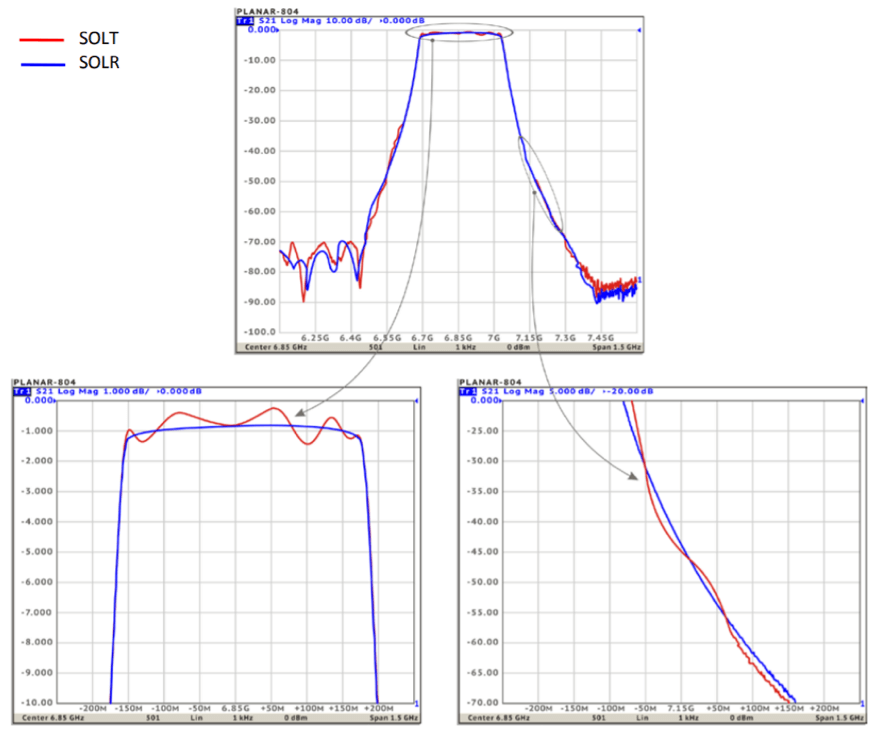
Figure 2: Bandpass filter measurements with different types of calibration.
While mastering the SOLR calibration, engineers sometimes have the following problem, regarding its differences from the SOLT calibration. Right after performing SOLT calibration with zero-model SOLT SOLR Thru, the VNA screen with connected Thru displays the magnitude of reflection coefficient significantly lower than -50 dB, and the magnitude of transmission coefficient 0 dB. Often these serve as criteria for correctly conducted calibration. In case of SOLR calibration those criteria are not met, which gets interpreted as faulty calibration. Let’s examine the fallacy of these criteria for the SOLT, as well as the SOLR calibration.
First, for SOLT calibration the values of the reflection and transmission coefficients of the used Thru don’t depend on Thru itself but depend only on the model used. If the Thru is truly zerolength, then the given criteria have the right to exist, but in case of using an adapter as a Thru, the given criteria do not apply. Let’s say the operator uses a damaged Thru, with a bad match (more than -20 dB) or significant attenuation (a few dB), then, confirming the validity of the calibration with the criteria given above, we find that measurements are made with a fatal error.
Second, after performing SOLR calibration, while the Thru is still connected, the real parameters of the Thru are displayed on the VNA screen. This fact can be used to assess the quality of the performed SOLR calibration, comparing them to known parameters of the Thru. For which it is useful to measure the Thru in advance and save its parameters in a file or print them in graph form.
Advantages of SOLR calibration for measuring non-insertable DUTs, compared to SOLT calibration:
- Much smaller error
- Low requirements to the Thru: reciprocity (satisfied by practically all passive devices), insertion loss less than 10 dB
- Ease of execution: “with a click of a button” in PLANAR 804/1 VNA software
- Ability to assess the quality of the performed calibration.
Given everything stated above, it is recommended to use SOLR method over the traditional SOLT calibration for all non-insertable DUT measurement cases.


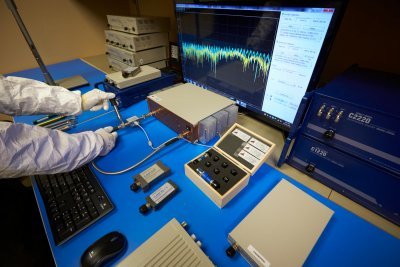
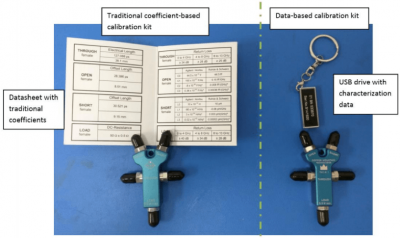

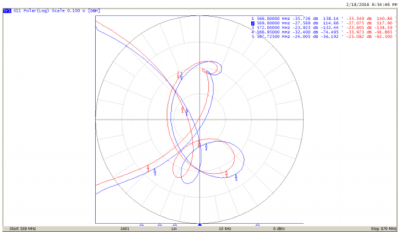
Comments (1)